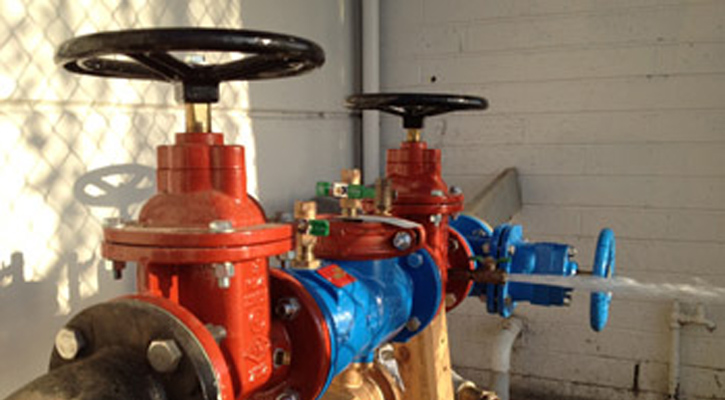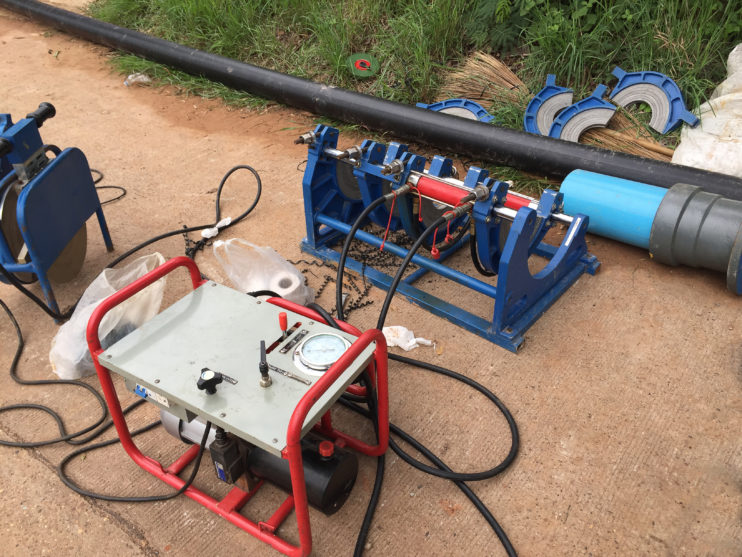Am Backflow Testing Critical for Ensuring Water Quality?
Am Backflow Testing Critical for Ensuring Water Quality?
Blog Article
Do you find yourself trying to find additional info around Commercial Backflow Testing?

Yes, you require to backflow test your home's water system to ensure that the water is devoid of toxic substances and damaging degrees of chemicals. As a result of the equipment called for and area for error, you must not try to do heartburn testing on your own. We advise that you call a specialist plumber every couple of years to examine your water.
Heartburn Can Effect Both You and Your City
Since harmful heartburn can impact the public water supply in enhancement to a solitary building, numerous cities establish backflow standards. Contemporary cities have backflow gadgets in area that secure the water supply that comes from the majority of residences as well as business residential or commercial properties. The real threat originates from watering systems, which can damage the supply of water with toxic plant foods, manure, and other chemicals.
What Creates Backflow?
A common reason of heartburn is a loss of water pressure that triggers the water to siphon back into the water supply. After some time, there is a loss in water pressure as well as the pipe begins to draw the water back right into the water supply. As you can visualize, there are currently chemicals from the paint that are getting in the water supply, possibly posing a danger.
Heartburn Screening is Required by Legislation in Certain Cities
Relying on where you live, you might really be called for by legislation to backflow examination your legislation. For instance, Iowa City maintains a document of all residential properties offered by the city's water supply. The city requires that certain "high-hazard" centers undertake backflow screening. In some cases, properties such as houses and apartment buildings are influenced.
You Can Avoid Heartburn
Dangerous heartburn is easily avoidable if you have a specialist plumber install a backflow gadget. The plumber will likewise evaluate for heartburn and establish if there is an active danger. The main function of a backflow tool is to prevent water from moving backwards into your water supply. Plumbing professionals install the tool on the pipes in your house to guarantee that the water just moves in the appropriate instructions.
What is Backflow?
Simply put, heartburn is when water moves upwards-- the contrary direction in the plumbing system. This is additionally called "backpressure." When the water relocates this direction, it can mix with harmful toxic substances and position a risk.
Call a Plumber to Check for Heartburn Before It is Far too late
While it might seem grim, polluted water can cause horrible bacterial and viral infections that are challenging to deal with. A plumbing company can quickly test your home's water to identify if there are any kind of harmful chemical levels. If you can prevent the torment that comes from consuming polluted water, the little financial investment is. And if you do discover that your water has high levels of toxins, a plumber can conveniently install a heartburn prevention device.
Yes, you need to backflow examination your house's water supply to guarantee that the water is totally free of toxins as well as harmful levels of chemicals. Lots of cities develop heartburn standards since hazardous heartburn can impact the public water supply in addition to a single structure. A regular cause of backflow is a loss of water pressure that causes the water to siphon back right into the water supply. After some time, there is a loss in water pressure and also the hose starts to suck the water back right into the water supply. The major function of a backflow gadget is to protect against water from streaming backward right into your water supply.
WHY DOES BACKFLOW TESTING NEED TO BE DONE EVERY YEAR
What Is Backflow?
Toxic gas backing up into a building is one example of potential backflow issues, but backflow can occur in many other ways.
Backflow is generally referred to as the reversal of a liquid or gas in a plumbing system.
Most issues for the public occur with backflow resulting in contaminated drinking water. If you look up backflow issues online you’ll probably find references to “potable” water. That means drinking water.
There have been backflow issues in the past with drinking water. Chemicals, sewage and other contaminants have found their way into drinking water causing health issues for those that count on the fresh water.
What Causes Backflow?
In a residence or commercial building water generally flows one way. This normal flow is usually driven by consistent pressure in the water and waste system.
Anything that changes the normal pressure in the system can lead to backflow.
Fire hydrant use or malfunction can reverse the normal pressure in the system on a city line, but backflow can occur in a number of different ways.
Sometimes backpressure might be caused by someone using a garden hose and submerging the end of the hose in a pool of liquid. If pressure is lost the flow could reverse and contaminants could be released into the drinking water.
Anytime there is a connection between contaminants and the drinking water there is potential for a backflow issue. Sometimes these connections are not immediately obvious like the garden hose connecting to a building’s drinking water supply.
Backflow Regulations
The Environmental Protection Agency (EPA) provides guidelines and regulations for state and local governments regarding backflow. State and local governments also have their own guidelines and regulations for backflow prevention.
Arizona has its own backflow regulations.
Due to issues with backflow in the past, regulations require backflow preventer devices to be used in nearly all residential and commercial buildings.
A backflow preventer is a device that prevents backflow as cross-connection points where potential backflow issues may occur.
While backflow is not a common occurrence, preventers are in place to make sure there is no contamination should something malfunction or go wrong with a building’s water supply.

Do you really like reading about Backflow Prevention? Create a remark directly below. We'd be pleased to listen to your thinking about this blog posting. In hopes that you visit us again soon. Do you know someone else who is curious about Backflow Assembly Testing? Do not hesitate to promote it. Thank you so much for your time spent reading it.
Book
Report this page